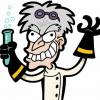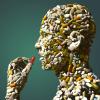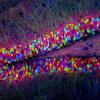Whereas I believe that there does indeed exist substantiated evidence that links 5HTP to increased risk of CARDIOVASCULAR DISEASE 
ScienceGuy,
Could you post some evidence/studies concerning the dangers of 5htp? Not that I doubt you, but I would like to read them. I am thinking about getting checked out by a doctor for valve damage but don't know what type of test to ask for. Also, I am considering switching from 5 htp to the 5mg escitalopram, but I want to get all the info I can. Also, what would be the best way to do the switch from my thrice daily 200mg 5htp TR doses to the 5mg escitalopram?
Great info ScienceGuy...I appreciate your insights!
L-5HTP increases risk of CARDIOVASCULAR DISEASE via
two mechanisms; firstly, by significantly increasing PLASMA RENIN ACTIVITY; and secondly, by significantly elevating levels of SYSTEMIC SEROTONIN.
See the following:
Pharmacol Biochem Behav. 1981 Jun;14(6):895-900.
Effects of serotonin and L-5-hydroxytryptophan on plasma renin activity in rats.Barney CC, Threatte RM, Kikta DC, Fregly MJ.
AbstractThe effects of dipsogenic doses of l-5-hydroxytryptophan (5-HTP) and serotonin on plasma renin activity (PRA), blood pressure, and body temperature were determined in unanesthetized female rats. Both serotonin (2 mg/kg, s.c.) and
5-HTP (25 mg/kg, s.c.) induced six-fold increases in PRA measured 1 hr after drug administration. The central and peripheral decarboxylase inhibitor, benserazide (30 mg/kg, s.c.), as well as the peripheral decarboxylase inhibitor, carbidopa (6.5 mg/kg s.c.), prevented the increase in PRA associated with administration of 5-HTP. This suggests that 5-HTP must be converted to serotonin peripherally to increase PRA. At the doses used, serotonin decreased mean blood pressure and colonic temperature of unanesthetized rats while 5-HTP was without effect. The increase in PRA induced by 5-HTP does not appear, therefore, to be a response to either hypotension or a decrease in colonic temperature. Since 5-HTP must be converted to serotonin to initiate both a drinking response and an increase in PRA, the results suggest that the decrease in blood pressure and colonic temperature following administration of serotonin may not be important in induction of the drinking response and the increase in PRA. The mechanism by which activation of the renin-angiotensin system occurs following peripheral administration of either 5-HTP or serotonin remains for further study.
PMID: 7019933
-------------------------------------------------------------------------------------------------------------------------------
Am J Cardiol. 2011 Jul 15;108(2):246-51. Epub 2011 May 3.
Prognostic value of plasma renin activity in heart failure.Vergaro G, Emdin M, Iervasi A, Zyw L, Gabutti A, Poletti R, Mammini C, Giannoni A, Fontana M, Passino C.
SourceDivision of Cardiovascular Medicine, Fondazione Toscana G. Monasterio, Pisa, Italy.
AbstractThe prognostic role of specific biomarkers of the renin-angiotensin-aldosterone system and sympathetic activation pathways in heart failure has never been investigated in populations with current evidence-weighted treatment. To establish whether the plasma renin activity (PRA), among several neurohormonal biomarkers, is able to predict cardiac events in a population of patients with heart failure on up-to-date treatment, we selected 996 consecutive patients with systolic left ventricular dysfunction (ejection fraction <50%, mean age 65 ± 13 years), who underwent a complete clinical and humoral characterization and were then followed up (median 36 months, range 0 to 72) for cardiac death and appropriate implantable cardioverter device shock. We recorded 170 cardiac deaths and 27 shocks. On Cox multivariate analysis, only ejection fraction (hazard ratio 0.962, 95% confidence interval 0.938 to 0.986), N-terminal pro-brain natriuretic peptide (NT-proBNP; hazard ratio 1.729, 95% confidence interval 1.383 to 2.161) and PRA (hazard ratio 1.201, 95% confidence interval 1.024 to 1.408) were independent predictors of cardiac death. Receiver operating characteristic curve analysis identified a cutoff value for PRA of 2.30 ng/ml/hour that best predicted cardiac mortality. Independent predictors of PRA were ejection fraction, functional class, sodium, potassium, NT-proBNP, norepinephrine, aldosterone, C-reactive protein, and medical therapy. The association of high NT-proBNP and
high PRA identified a subgroup (22% of the study population) with the greatest risk of cardiac death. In conclusion, PRA resulted an independent prognostic marker in patients with systolic heart failure additive to NT-proBNP level and ejection fraction. PRA might help to select those patients needing an enhanced therapeutic effort, possibly targeting incomplete renin-angiotensin-aldosterone system blockade.
-------------------------------------------------------------------------------------------------------------------------------
Circulation. 2005 Mar 29;111(12):1517-22. Epub 2005 Mar 21.
Long-term [systemic] serotonin administration induces heart valve disease in rats.Gustafsson BI, Tømmerås K, Nordrum I, Loennechen JP, Brunsvik A, Solligård E, Fossmark R, Bakke I, Syversen U, Waldum H. SourceDepartment of Internal Medicine, St Olavs Hospital HF, Trondheim University Hospital, Trondheim, Norway. bjorn.gustafsson@medisin.ntnu.no
Abstract BACKGROUND: The purpose of this study was to investigate whether rats dosed with serotonin develop changes similar to those seen in human carcinoid heart disease.
METHODS AND RESULTS: Ten Sprague-Dawley rats were given serotonin injections subcutaneously once daily for 3 months; controls were given saline. A long-lasting hyperserotoninemia with a >10-fold increase in both platelet-poor plasma and dialysate from the femoral muscles appeared. The animals developed clinical signs such as flushing and loose stools. After 3 months, 6 of 10 rats given serotonin had pathological echocardiographs. Two animals had a combination of aortic and pulmonary valve insufficiency, 1 had isolated aortic valve insufficiency, and 3 had isolated pulmonary valve insufficiency. Histopathological examination revealed shortened and thickened aortic cusps and carcinoidlike plaques characterized by a collection of myofibroblasts within an extracellular matrix of collagen ground substance. Immunostaining for Ki-67 demonstrated an increased number of proliferating subendocardial cells. In the control group, no pathological changes were seen. With the use of reverse-transcription polymerase chain reaction, normal rat aortic cusps were shown to express mRNA for serotonin receptors 5-HT1A, 5-HT2A, and 5-HT2B and the serotonin transporter 5-HTT.
CONCLUSIONS: For the first time,
long-term [systemic] serotonin administration was performed in rats. Morphological and echocardiographic changes similar to those seen in human carcinoid heart disease developed. This study demonstrates that [systemic] serotonin most likely is involved in the pathogenesis of carcinoid heart disease.PMID: 15781732

















































